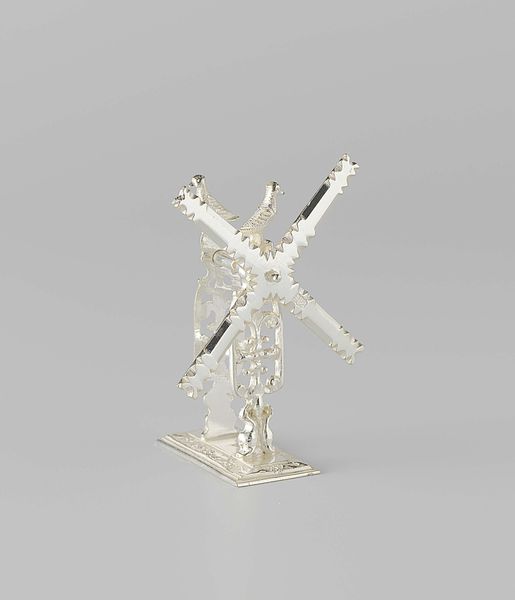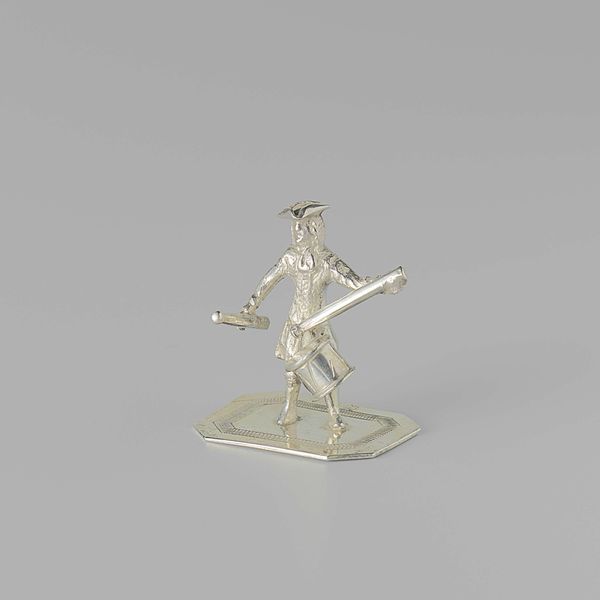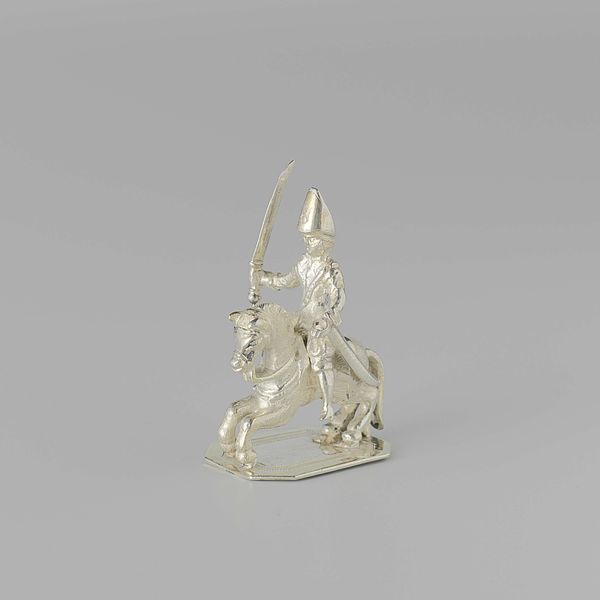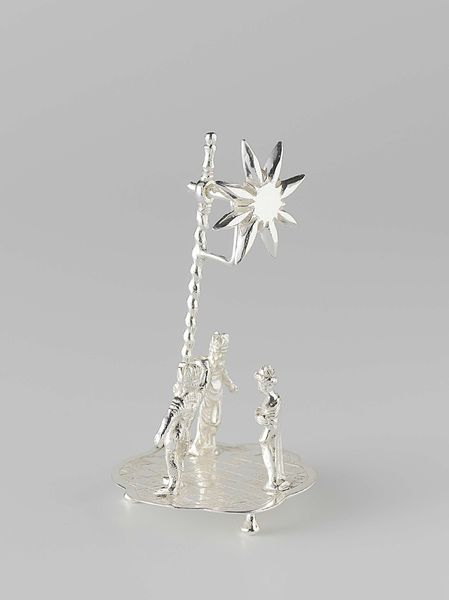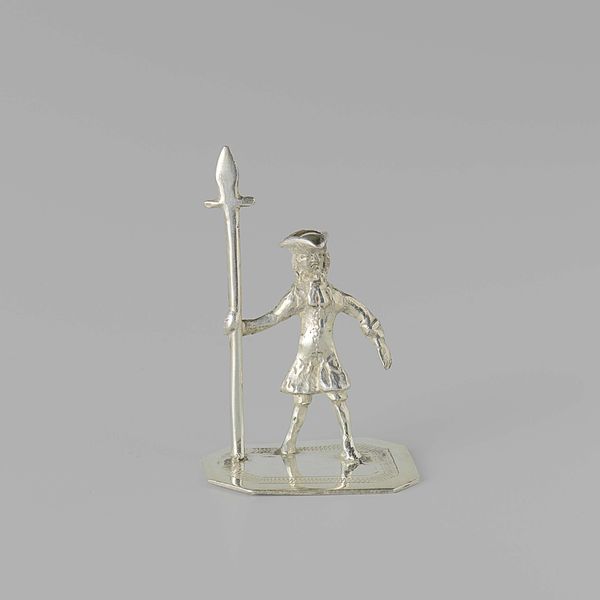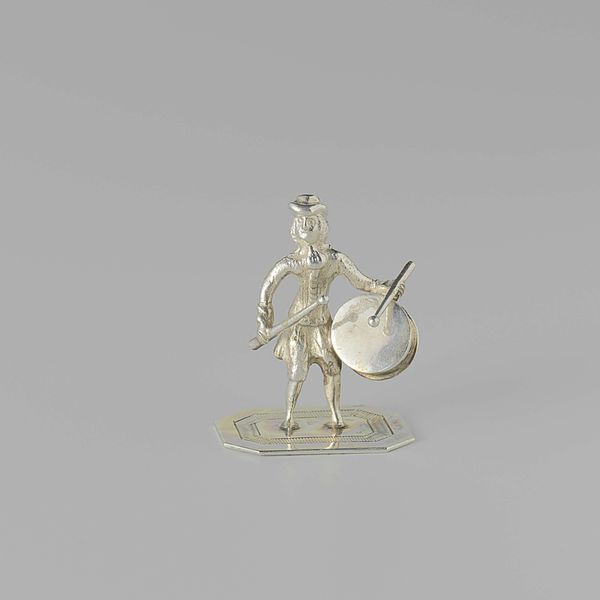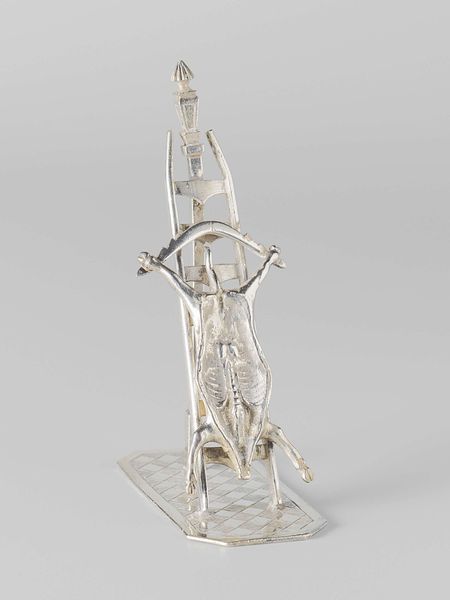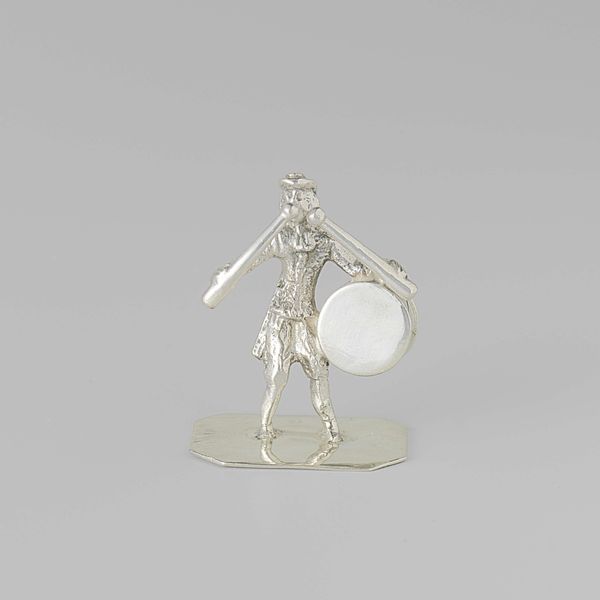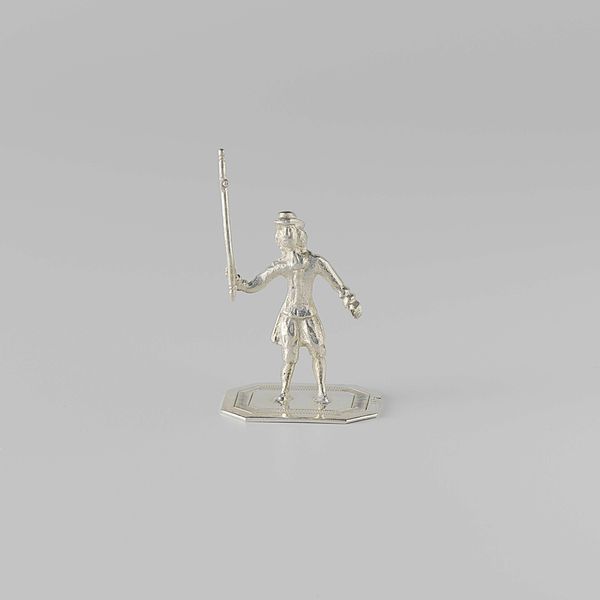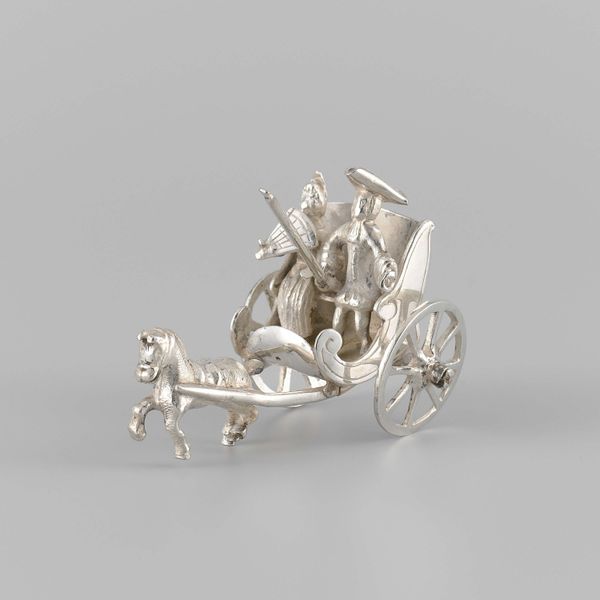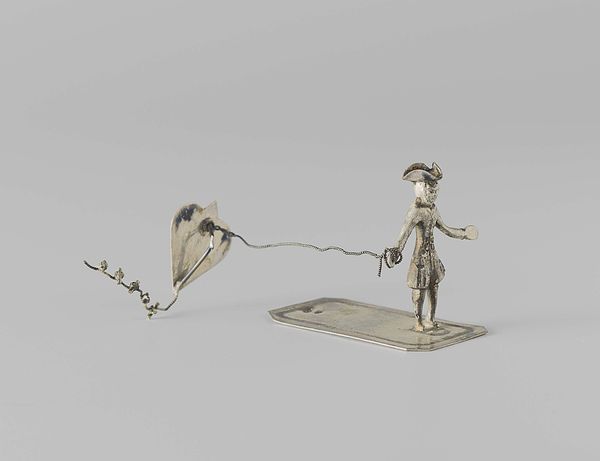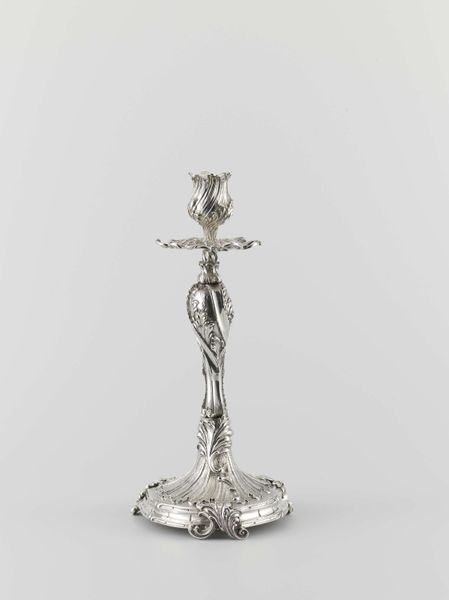
silver, metal, sculpture
#
silver
#
baroque
#
metal
#
sculpture
#
miniature
Dimensions: height 6.2 cm, width 4.7 cm, depth 3.8 cm
Copyright: Rijks Museum: Open Domain
Editor: This is "Three Windmills for Drawing Water" made before 1696 by Wessel Jansen, it seems to be crafted from silver and other metals. The immediate feeling is of delicate craftsmanship, like a precious toy, but I am unsure if that impression matches the maker's original intention. What symbols or deeper cultural meanings can you draw from it? Curator: Ah, a fascinating object! Windmills, even in miniature, are potent symbols. Consider the Dutch landscape, largely reclaimed and maintained through such technology. Windmills thus embody a collective will to control nature, but also represent ingenuity. Jansen has given form to something that defines place and shapes its inhabitant's experience, embedding deep within the object their shared narrative. Editor: That makes sense. I can see how the cultural context informs its symbolic power. Are there other things you note, for example, the doves perched on the windmill blades, or its delicate detailing? Curator: Precisely! Birds often appear to be coupled or paired in artistic rendering: A powerful connection is created by their mirrored orientation, yet with individual inclination that does not directly address each other. Consider the Baroque style, its ornate detailing signifies status and abundance. But why create a *miniature* windmill? It suggests a reverence for the technology, perhaps an effort to domesticate or shrink down the very forces that shaped the culture, transforming it from an industrial tool to an object of affection or reflection. Editor: So, beyond being a decorative object, it’s almost a concentrated expression of Dutch identity and ingenuity, made precious. Thank you. Curator: Yes! Visual emblems compact collective consciousness and cultural touchstones. Studying their shape allows you to learn how societies reinforce their shared existence. Editor: I never thought about miniatures having that capacity. I appreciate you illuminating its broader meaning.
Comments
rijksmuseum over 2 years ago
⋮
Some types of miniature continued to be produced for ages. One such ‘evergreen’ subject was the windmill placed above a well. These mills used wind power to draw up a bucket of water. While there is more than a century between the earliest and the latest, their form and decoration have remained virtually the same.
Join the conversation
Join millions of artists and users on Artera today and experience the ultimate creative platform.
